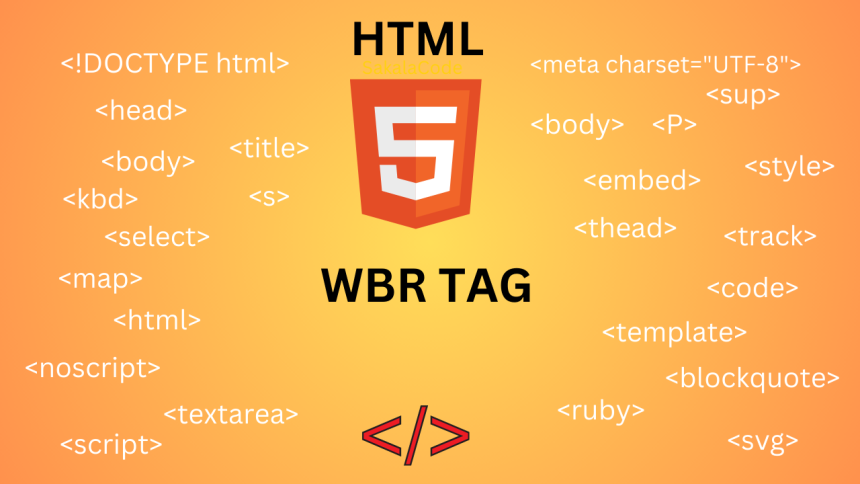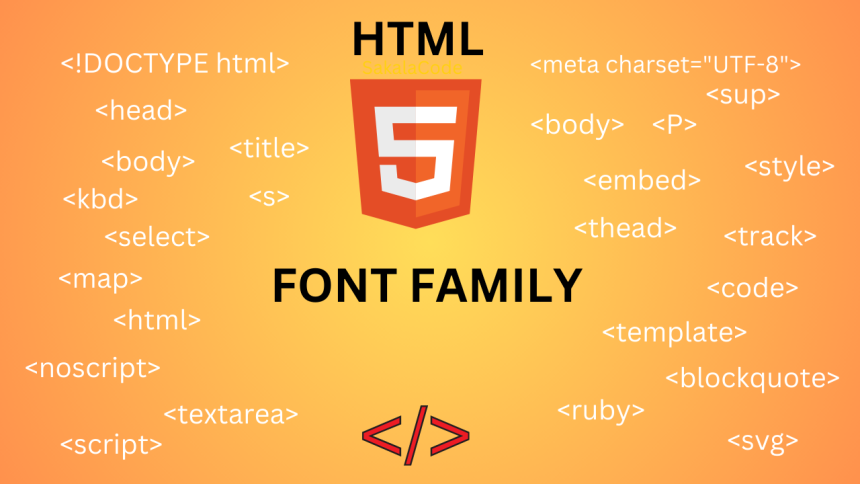
HTML Wbr Tag
The <wbr> (Word Break Opportunity) tag is used in HTML. Where the can browser break the line if needed.
Interaction with CSS and Layout
While the <wbr> tag is a helpful tool for controlling text breaks, it works best when paired with CSS properties like word-wrap, overflow-wrap, and hyphens etc. These properties is provide additional control and how text is wrapped and displayed.
- word-wrap: break-word; – This CSS property forces the browser to break words when necessary, even if they are longer width container also.
- overflow-wrap: break-word; – This CSS property serves a similar function as word-wrap its allowing words to be broken and wrapped into the next line.
- hyphens: auto; – This CSS property is allow browser to break words at appropriate point inserting hyphens when needed.
Syntax of the HTML <wbr> Tag:
The HTML <wbr> tag is a void (self-closing) element, meaning it does not have an opening or closing tag. It can be placed anywhere within a block of text or content to suggest possible break points for the word.
<wbr>
How the <wbr> Tag Works
The <wbr> tag is used to indicate a potential line break opportunity. However it is not guaranteed that the browser will break the word at the exact location of the <wbr> tag. The decision to break the word depends on the available space in the container and the browser rendering engine.
Here's a key point to understand:
If the browser needs to break a line it will consider the position of the <wbr> tag as one potential location for the break.
If the browser determines that the word can fit without breaking it will ignore the <wbr> tag and display the word as a whole.
This tag does not force the word to break it just provides a potential break point.
Best Practices for Using the <wbr> Tag:
Use sparingly: While using the <wbr> tag can be useful, it should not be overused. used inserting <wbr> tag in place where the word is already short or can easily fit within the container.
Advantages of the <wbr> Tag:
- Improved Readability: By controlling where a word break tag the page layout can look more organized and more readable across different sizes of screen.
- Responsive Design: Helps with creating websites more responsive especially when content like long tail words or URLs could disrupt the flow of text.
- Enhanced User Experience: Provides a better experience for users with mobile devices or smaller screens by preventing horizontal scrolling.
Disadvantages of the <wbr> Tag:
- Inconsistent Support: Although the <wbr> tag is supported by modern browsers. it is still relatively new and old browser might not fully recognize it.
- Overuse: It should be used sparingly Overusing <wbr> tag can make the code more complex and harder to maintain especially if the content is dynamic.
- Not a Complete Solution: The <wbr> tag doesn’t always guarantee that a word will break at that point as it depends on the browser interpretation. It is more of a suggestion than a command.
Where to Use the <wbr> Tag:
- Long Words: When you have long words or names that might overflow their container in narrow screens.
- URLs and Email Addresses: For long URLs or email addresses that could break layouts.
- Responsive Design: To create a better user experience on small screens without requiring horizontal scrolling.
- Hyphenation: When you want to suggest possible places for hyphenation within words.
Browser Support for <wbr>
The <wbr> tag is well-supported across modern browsers, including Chrome, Firefox, Safari, and Edge. However, it may not be supported in older versions of Internet Explorer (e.g., IE 8 and below). Always test your web pages in multiple browsers to ensure compatibility, particularly with older versions of Internet Explorer.
Limitations of the <wbr> Tag
Despite its usefulness, the <wbr> tag has some limitations:
It does not enforce a line break; it merely suggests one.
It only works for inline content; it cannot be used with block elements like <div> or <section>.
Overuse may cause confusing breaks in the text, especially if not applied carefully.
Practical Example of Using Both CSS and <wbr>:
<!DOCTYPE html>
<html lang="en">
<head>
<title>WBR with Example</title>
<style>
.container {
width: 200px;
border: 1px solid #000;
padding: 10px;
}
</style>
</head>
<body>
<div class="container">
Wbr (Word Break Opportunity) tag<wbr>is used in HTML.
</div>
</body>
</html>
Example 2
<!DOCTYPE html>
<html lang="en">
<head>
<title>Word Break Example</title>
<style>
p {
word-wrap: break-word;
word-break: break-word;
}
</style>
</head>
<body>
<p>This is a long word: thisisaverylongword<wbr>thatmightbreakwhen<wbr>thepageisnaraaarow.</p>
</body>
</html>
Summary:
The <wbr> tag in HTML is a useful tool for handling word breaks in long text ensuring that content doesn’t overflow or cause layout issues especially on smaller screens. It is most beneficial in responsive designs and when dealing with URLs or other long strings that could disrupt the layout.





